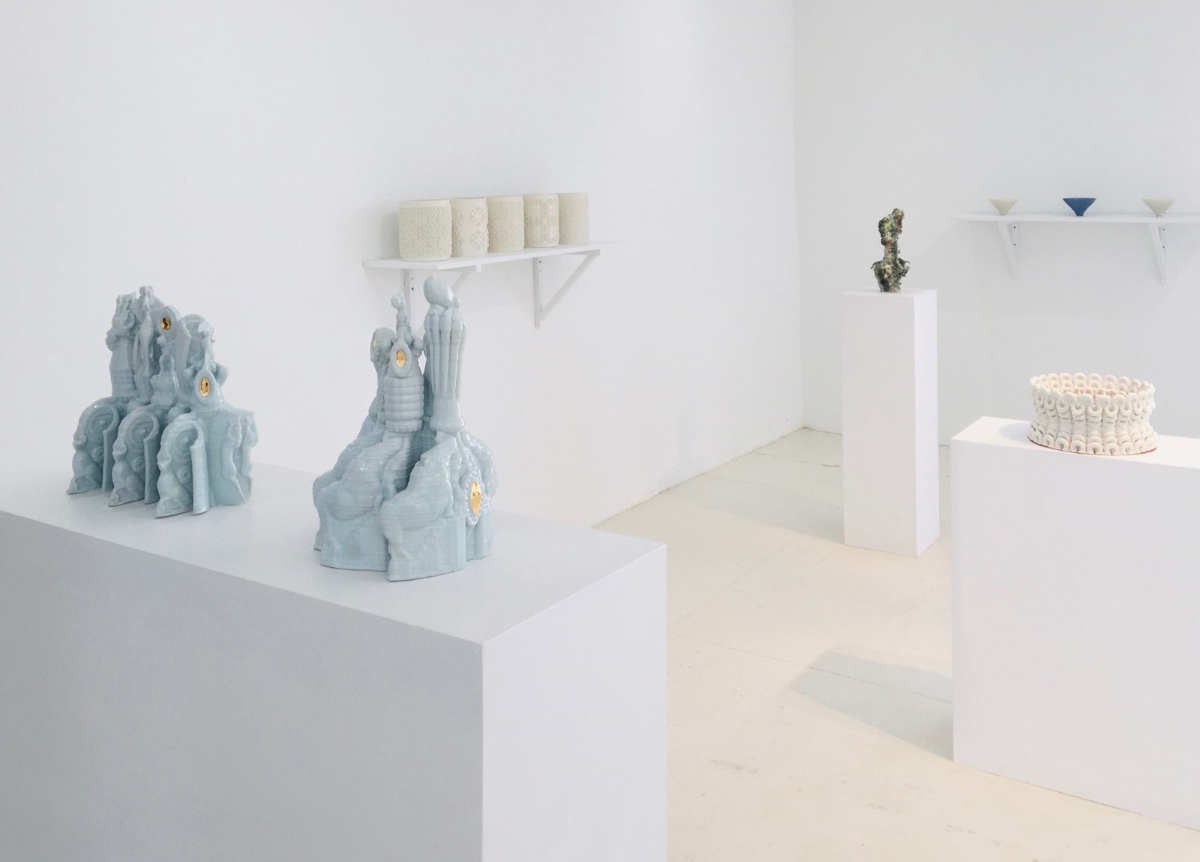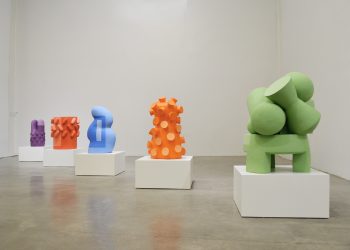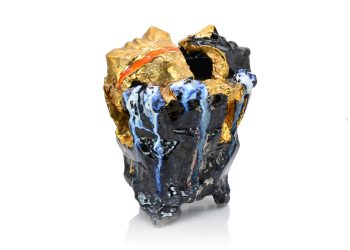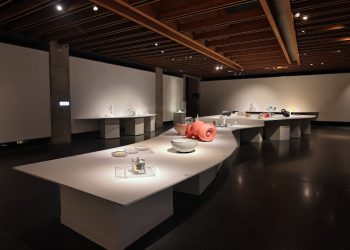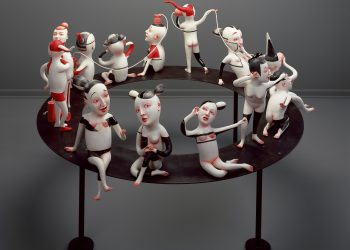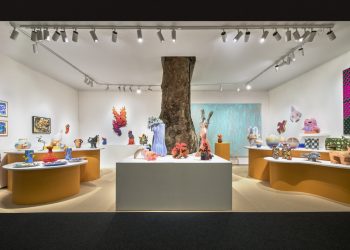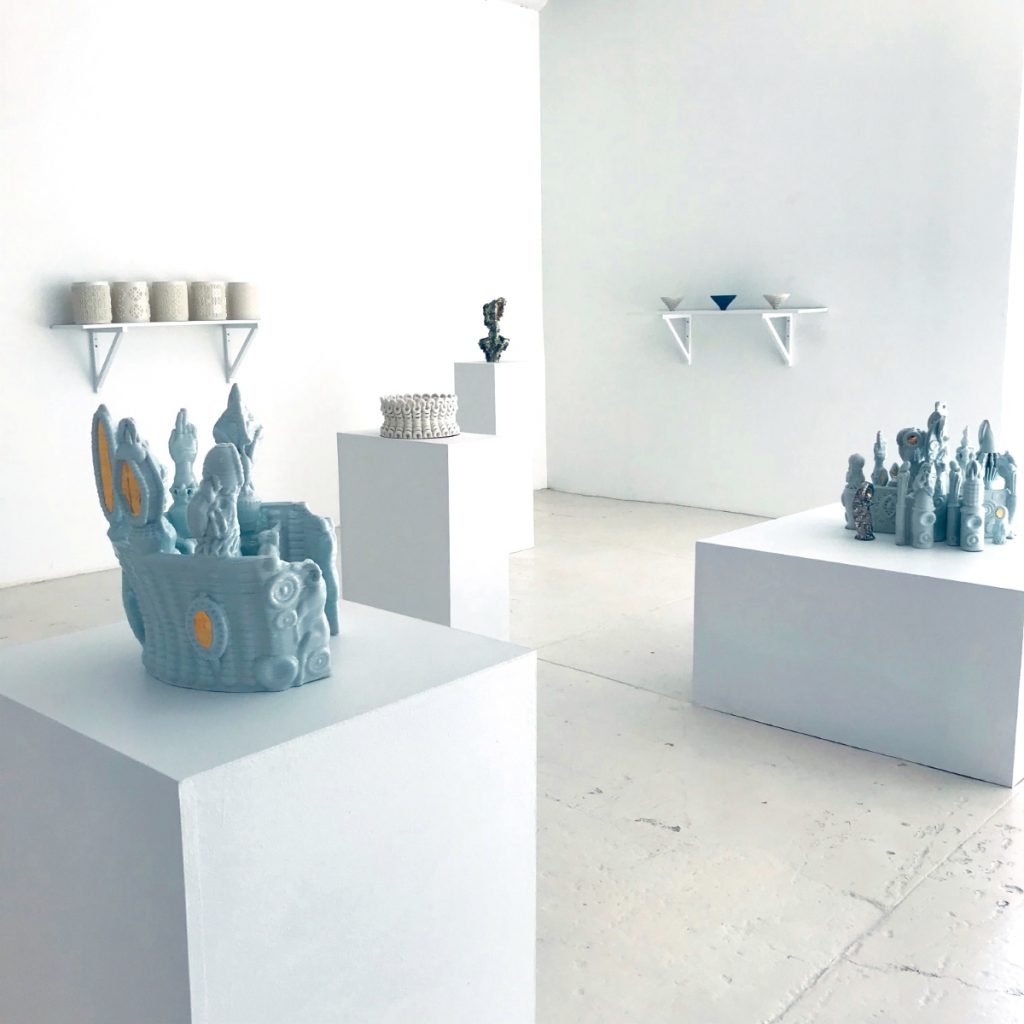
Installation view 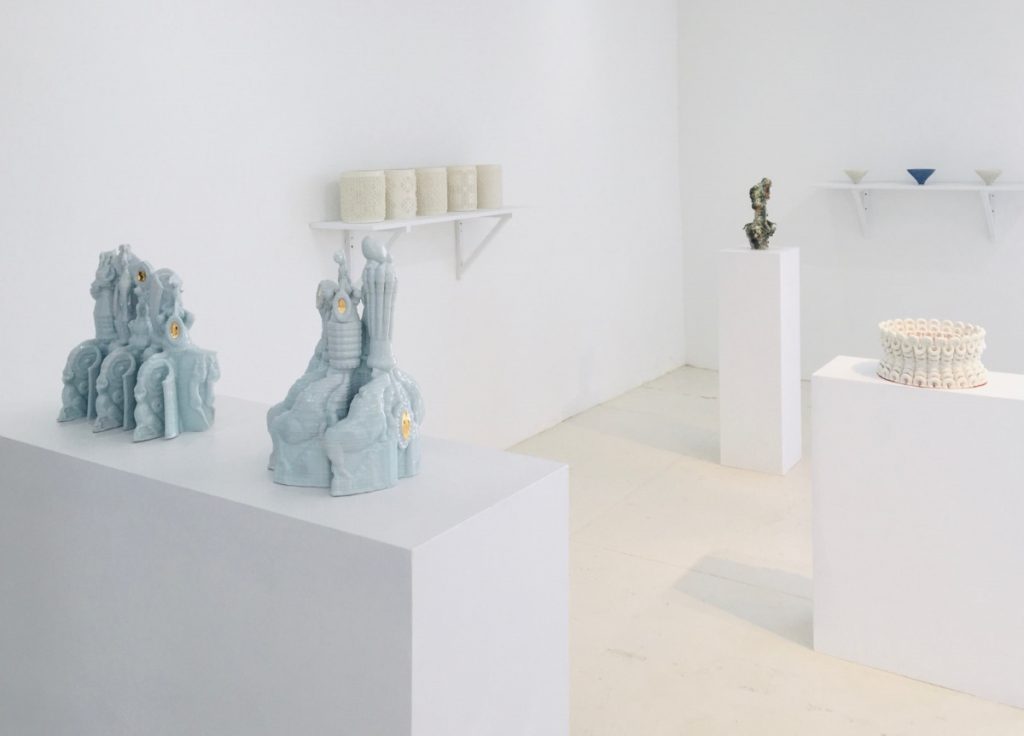
Installation view 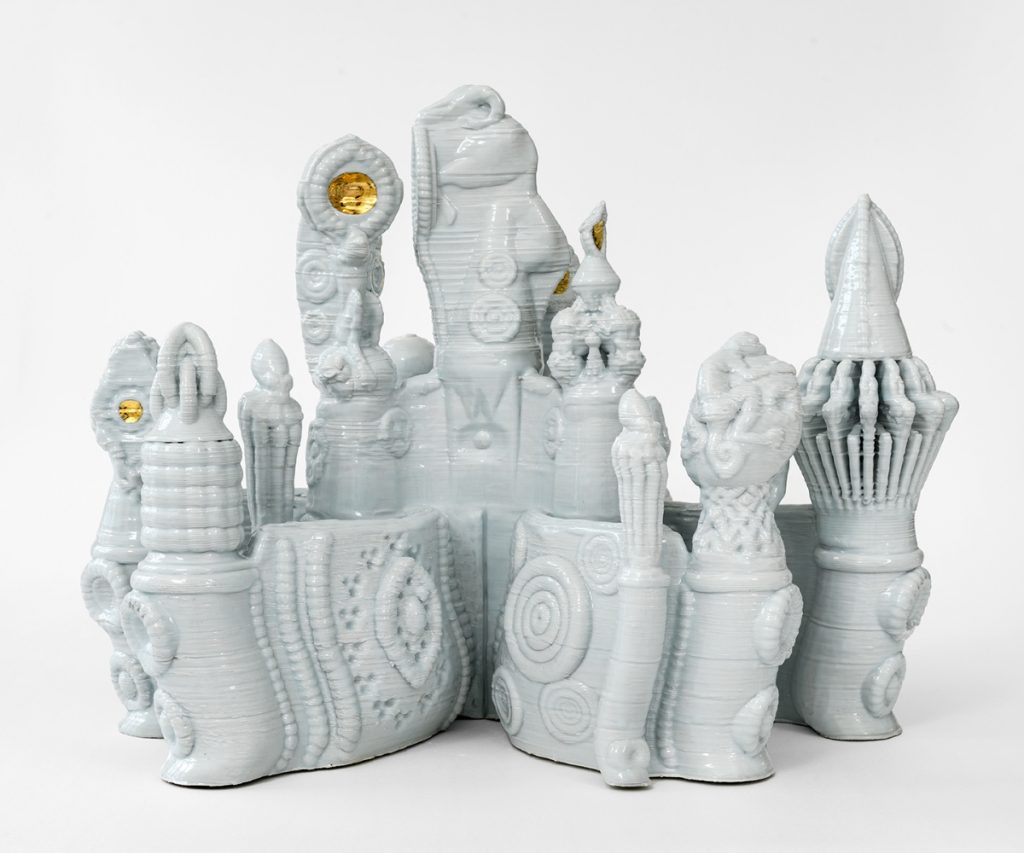
Nicolas Touron, Bestiaire, 2020, 3D printed porcelain, celadon cone 10, luster 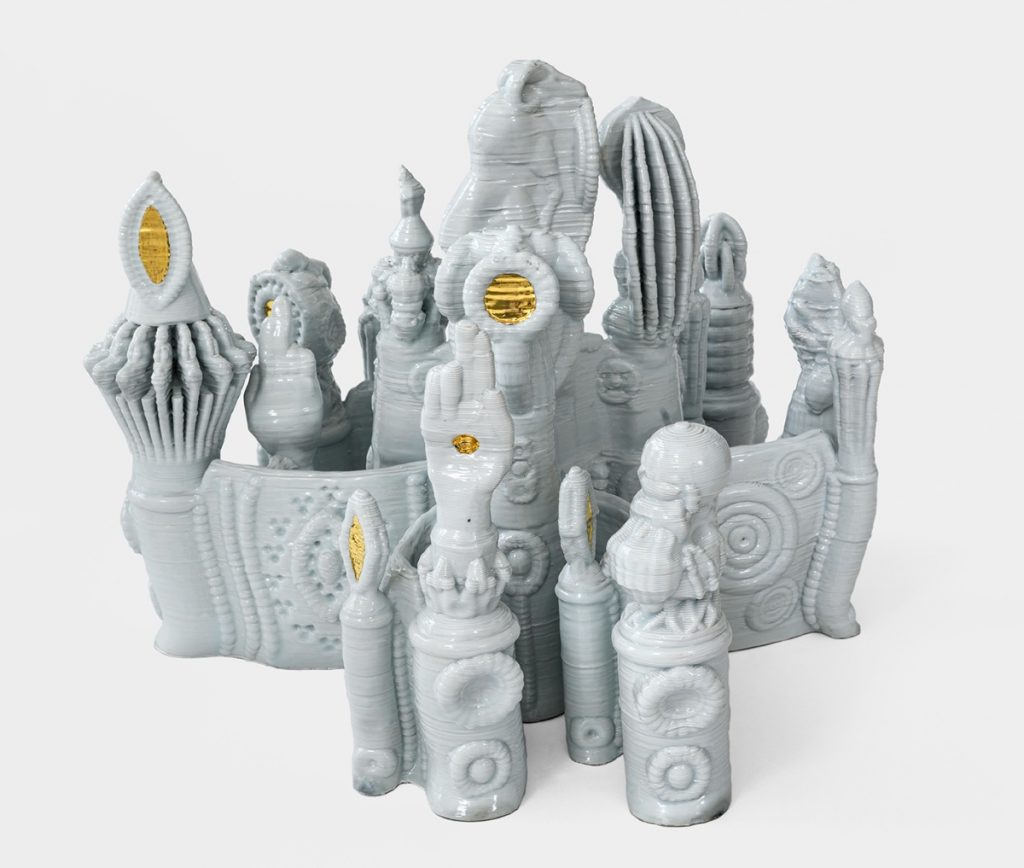
Nicolas Touron, Bestiaire, 2020, 3D printed porcelain, celadon cone 10, luster 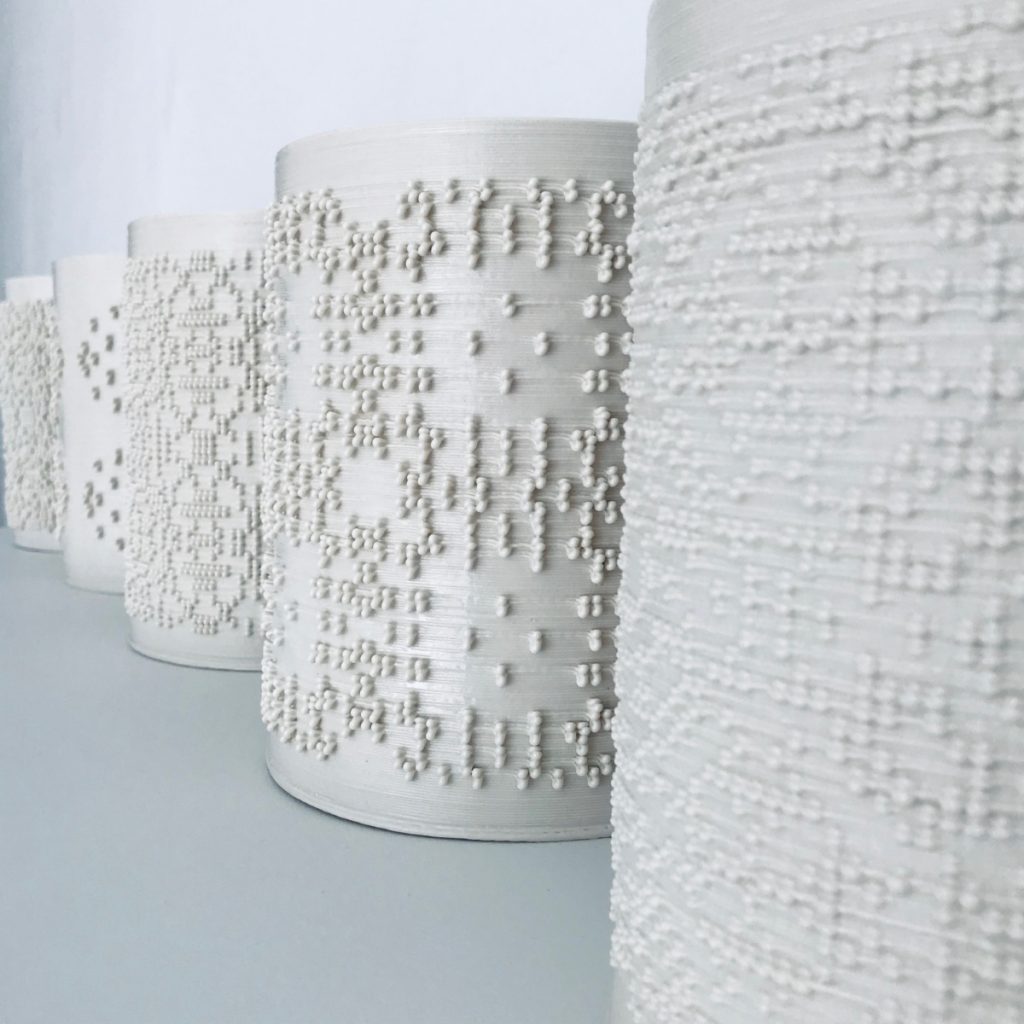
Timea Tihanyi, Colors of a Punctured Donut, 2019, 3D printed porcelain, glaze 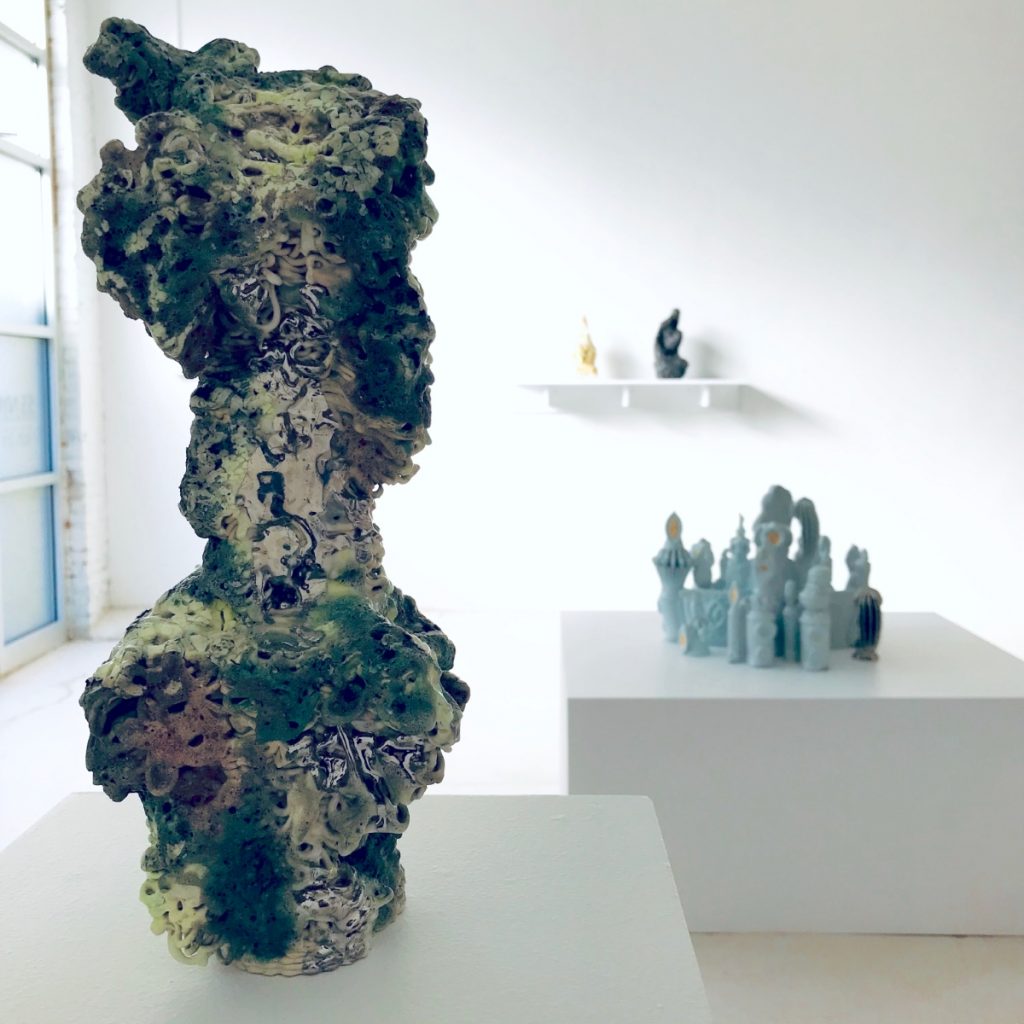
Bryan Czibesz, From partial stereophotogrammetric 3D scan, 2018-20, 3D printed and hand built clay, glaze, overglaze 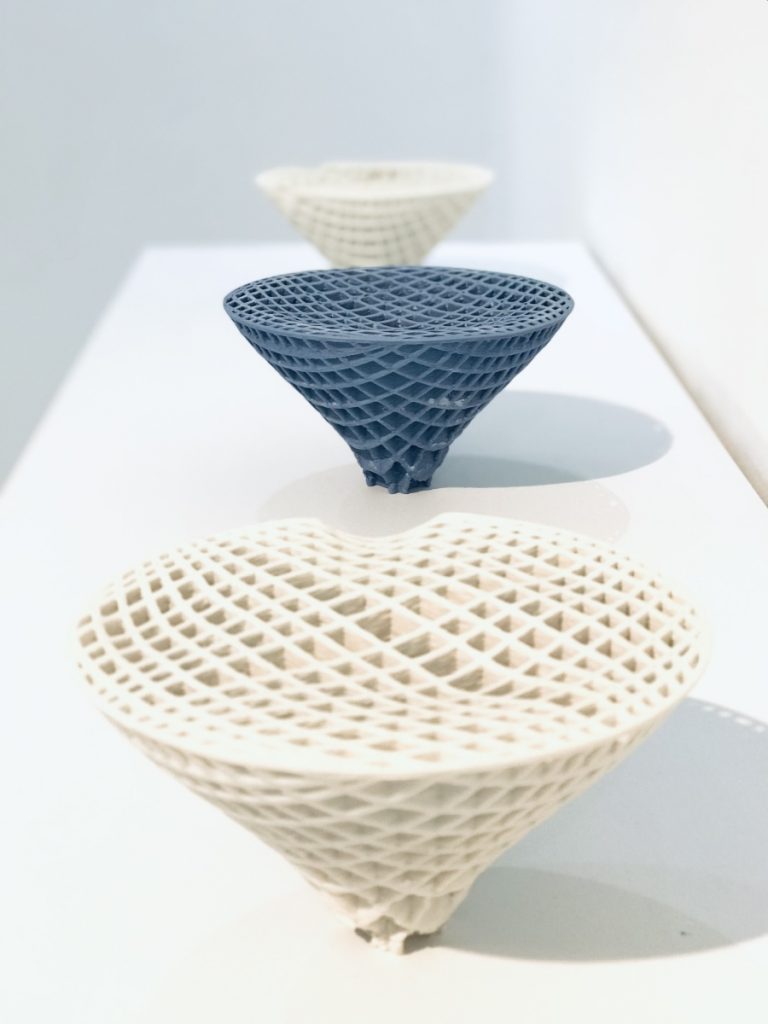
Emre Can, Optical Effect, 2019, 3D printed porcelain 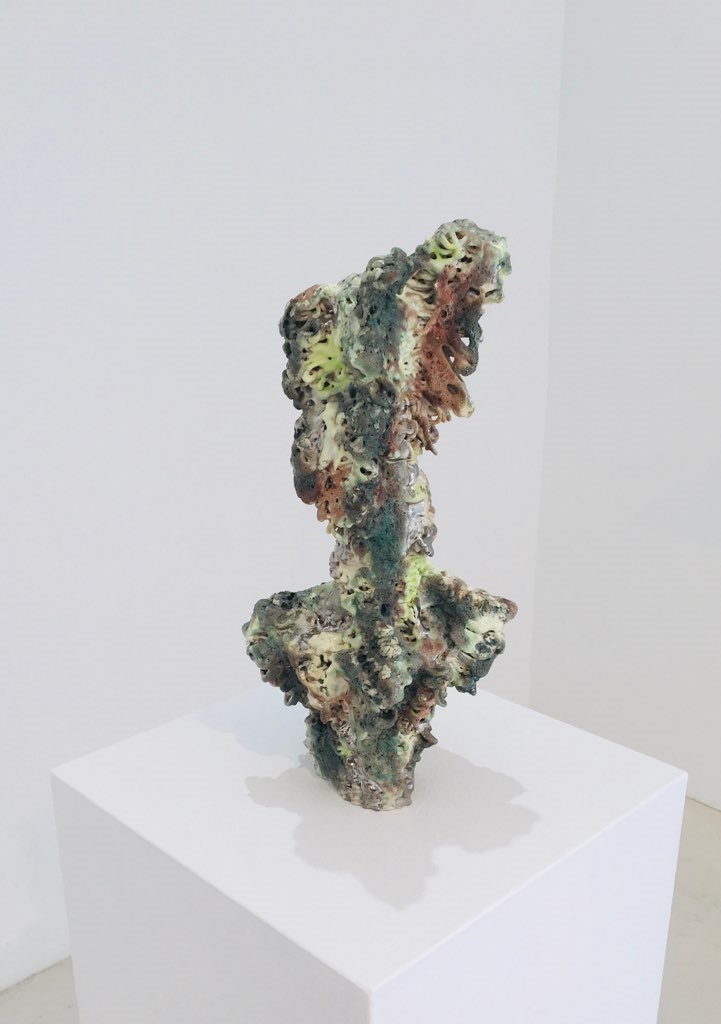
Bryan Czibesz, From partial stereophotogrammetric 3D scan, 2018-20, 3D printed and hand built clay, glaze, overglaze 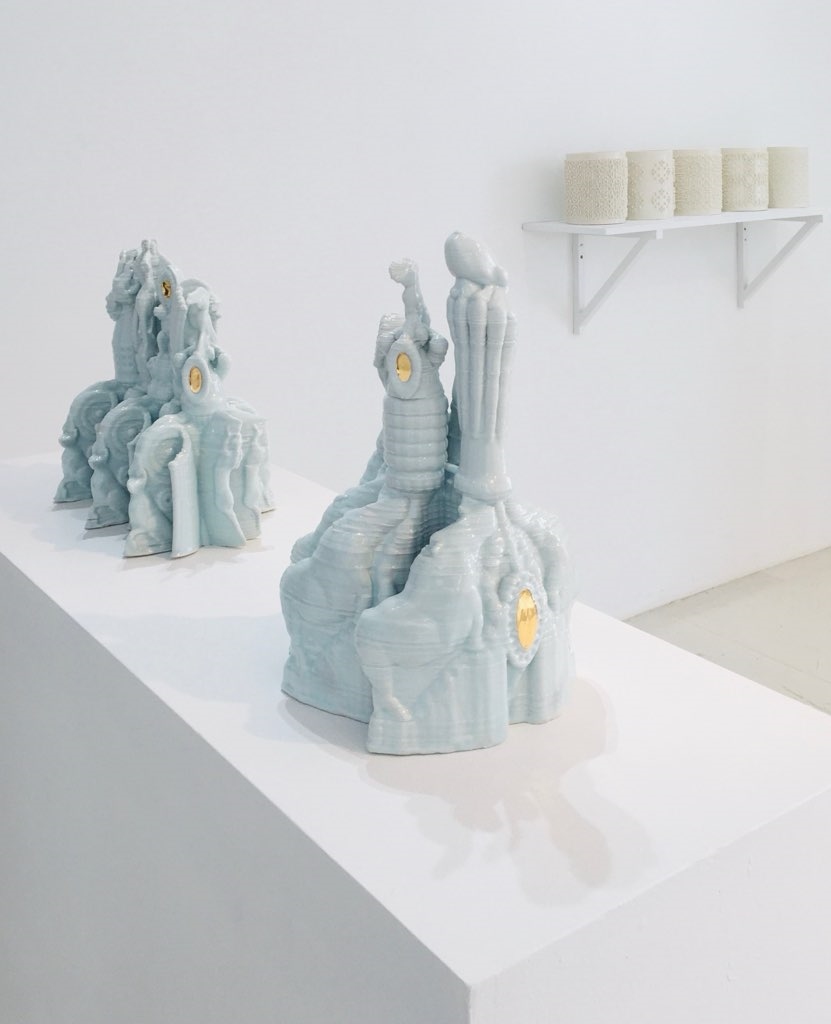
Installation view
Between Technology And Craft is on view at Sculpture Space NYC, New York
September 25 – November 6, 2020
Sculpture Space NYC is proud to present, Between Technology And Craft as part of its Curatorial Program series, featuring work by Emre Can, Bryan Czibesz, Timea Tihanyi and Nicolas Touron.
3D clay printing is now establishing itself as a relevant creative process for a generation of artists.
While partly developed at its origin as a design tool, numerous artists could see the fascinating potential in this process where computer skills and thousands of years of ceramic techniques could be brought together to create shapes and form that would only occur first within limitless possibilities of the virtual world.
This small survey is aimed to show the similarity and differences happening within these 4 various bodies of work developed by artists from different backgrounds and at different stages of their careers using a variety of clay printers.
Emre Can
As a tool to shape ceramic I use a Three-Dimensional printer. Nature surrounding us carries both a material and intuitive feeling and an internal structure that affects us. While nature is so organic, digital media is so artificial. My goal is to transform the artificial forms from a machine into an organic structure with different touches, to capture the opposition between artificial and organic, and to deform the ceramic structures produced by a machine to reveal new forms. While designing to make use of the internal spaces of a structure, I combine the forms that I created in digital environment with traditional shaping methods. There is a skeleton, a system that constitutes each item and keeps that item alive. That is what I am curious about and where I focus what I want to tell within my work. I am also getting new forms in the framework of the theme that I have specified.
Bryan Czibesz
This work began as an attempt to make objects that could act as proxies for memory. Using an iPhone, I took thousands of photographs of objects documenting various personal and collective histories: the flight of my family from Europe in the wake of World War II, personal family artifacts, public monuments, and Mediterranean history and mythology. An algorithm processes the images into points that define a digital 3D model. While being reproduced on an extrusion clay 3D printer I built from scratch, they become manic gestures of line, embellished by desperate hands seeking to make something tangible from this infinitely reproducible data. This act exploits the use of clay as a material of record and permanence, while dislocating its plasticity from the direct mark of the hand. This invokes the complexity and value of the term “handmade,” and engages a corporeal space somewhere between the promise of technology and the reality of loss over time.
Timea Tihanyi
Tihanyi’s work probes the boundaries of technology and embodied knowledge of production. She is interested in the nature of rules: how the mind creates and builds them into meaningful systems, like mathematical algorithms, and how human ingenuity transgresses and breaks these systems, making rules fail intentionally. For Tihanyi, digital technology provides a tool to experiment and iterate with logical code-driven systems, while clay ensures gleeful opportunities for slippage and spontaneous play. Tihanyi’s work is grounded in the haptic experience of touching clay. With this, she explores industrial craft traditions, not only in ceramics, but also focusing on the process of textile traditions, such as weaving, knitting and embroidery. Tihanyi’s my most recent work is inspired by textile traditions of her native Hungary. Her pieces are based on traditional Hungarian embroidery work, which passed down in her family, was the main source of income for her grandmother and female relatives.
Nicolas Touron
The 3D printed sculpture are an extension of a vernacular body of work I have been developing over many years. Delving into the juxtapositions between art form considered naive and a computerized form of creation perceived as a more concept driven process. I created these “contraptions” in the spirit of Ferdinand Cheval’s Palais Idéal. Assembling shapes and forms pulled out of the menagerie of personages from paintings and drawings I have been creating over the years. The 3D printed objects, which also recall reliquaries observed in the south of France and Italy are monument to the ideas of personage already used. The shapes created in the virtual world are designed as modules/personages which can be re-used and re-assemble to create new sculpture like element of receipt, left over of process of a previous career as a chef in France.
SSNYC’s curatorial program is dedicated to promoting contemporary visual art focusing on the research and exploration of three dimensional work with an emphasis towards ceramics.
Contact
ssnyc.ceramics@icloud.com
Address
47-21 35th Street
Long Island City
NY 11101


